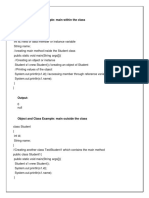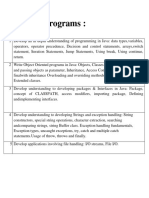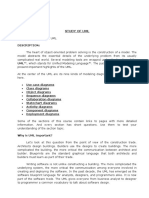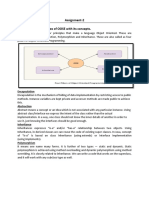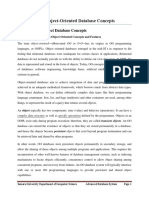0% found this document useful (0 votes)
23 views6 pagesJava Exam Preparation
The document provides an overview of key Java concepts including abstract classes, interfaces, and packages. It includes code examples demonstrating the implementation of abstract classes, method overrides, user-defined packages, and multiple inheritance through interfaces. Additionally, it compares abstract classes and interfaces, and showcases various inheritance models with practical examples.
Uploaded by
Harshit OdedraCopyright
© © All Rights Reserved
We take content rights seriously. If you suspect this is your content, claim it here.
Available Formats
Download as PDF, TXT or read online on Scribd
0% found this document useful (0 votes)
23 views6 pagesJava Exam Preparation
The document provides an overview of key Java concepts including abstract classes, interfaces, and packages. It includes code examples demonstrating the implementation of abstract classes, method overrides, user-defined packages, and multiple inheritance through interfaces. Additionally, it compares abstract classes and interfaces, and showcases various inheritance models with practical examples.
Uploaded by
Harshit OdedraCopyright
© © All Rights Reserved
We take content rights seriously. If you suspect this is your content, claim it here.
Available Formats
Download as PDF, TXT or read online on Scribd
/ 6




















